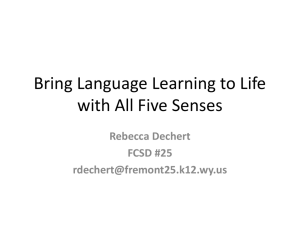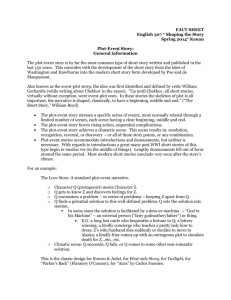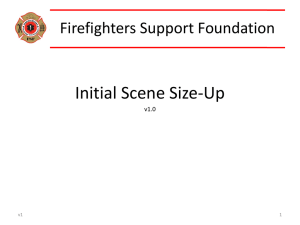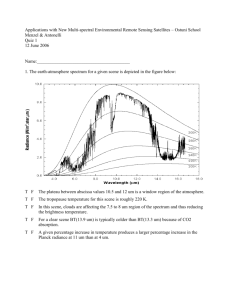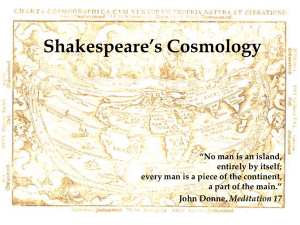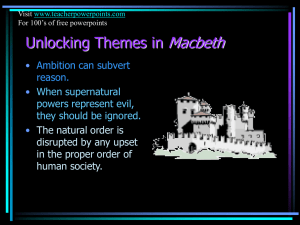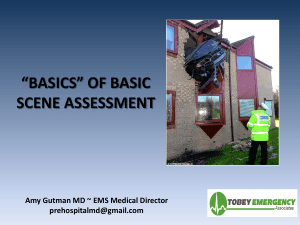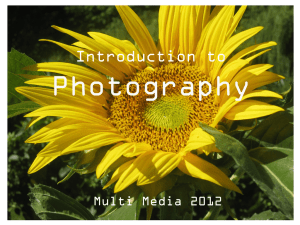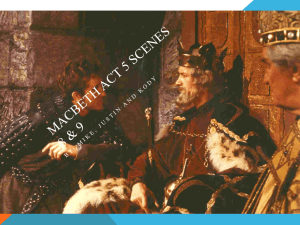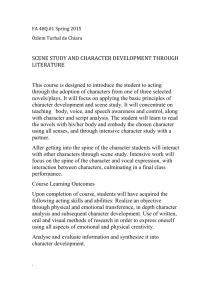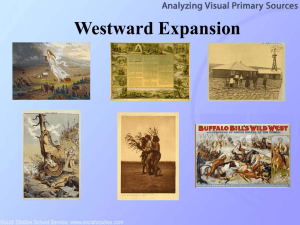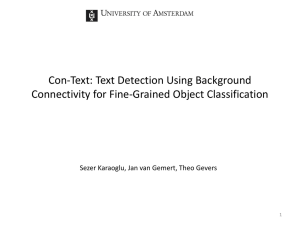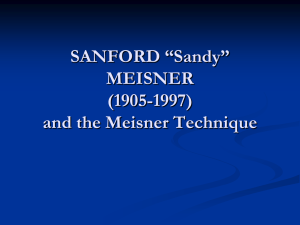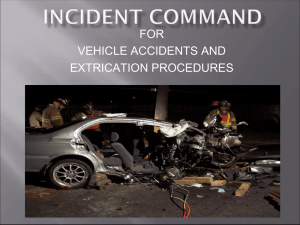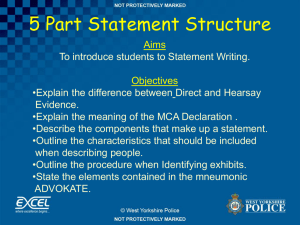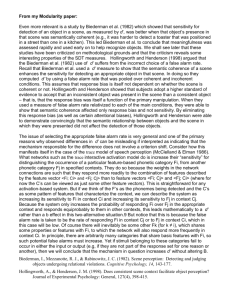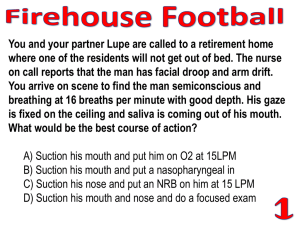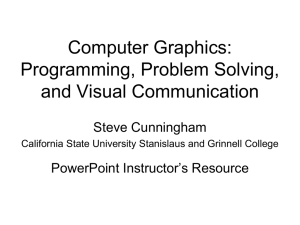Visual Discovery Presentation
advertisement
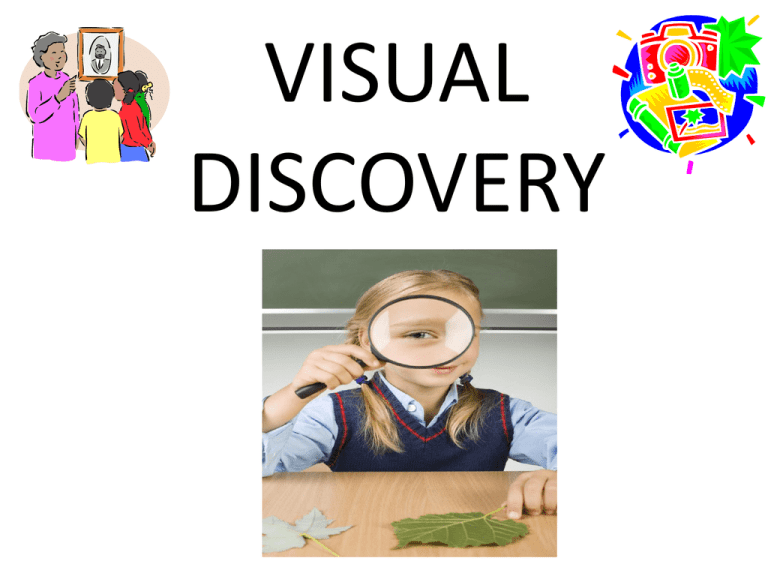
VISUAL DISCOVERY What is Visual Discovery? Visual discovery is a dynamic, participatory experience, where students view, touch, interpret and bring to life compelling visuals as they discover key social studies concepts. Visually illiterate? • Today’s students are bombarded daily with images. Constant exposure to television, videos, computer games, the Internet, magazines, and advertisements has created a visual generation. • Many teachers are beginning to notice, however, that while students certainly “consume” many images daily, they are not necessarily critical viewers who understand what they see. • In fact, far from being visually literate, many of our students are so numbed by the sheer quantity and rapidity of media images that they are left visually illiterate. EXAMPLE Using an image, like the image of war below showing US Troops, captures the essence of danger and hardship caused by war. The troops seem to be rushing into an uncertain future. This is an opportunity to ask students to step into the image and recreate what they may expect to confront during war. BENEFITS • • • • Sharpens visual-literacy skills Develop higher-level thinking skills Develops deductive reasoning Taps visual, intrapersonal, and bodykinesthetic intelligence • Helps students learn and remember STEP 1 Use powerful images to teach social studies content. WHY? Powerful images can represent key concepts of social studies lessons. The right image will stay in student’s minds for months or even years and will serve as a powerful visual reference to help them recall key information. Opportunity For example, the first image at right, which shows U.S. troops landing in Khe Sanh, South Vietnam, illustrates the massive deployment of U.S. troops for the Vietnam War. It is a strong visual reminder of the concept of deployment. The heavily laden troops seem to be rushing into an uncertain future. This sets up an excellent opportunity for the teacher to assume the role of onscene reporter and ask students who step into the image what they expect to confront in the jungles of Vietnam. STEP 2 Arrange your classroom so projected images will be large and clear. HOW? The best classroom configuration for Visual Discovery is parliamentary style, with 2 groups of desks, facing each other. STEP 3 Ask carefully sequenced questions that lead to discovery. HOW? Ask a series of questions that spiral from the basic to the critical thinking level. • What do you see? • What do you suppose these people are expecting to happen? Be sure to link each successive question to the question preceding it. Level I: Gathering Evidence • Start by telling students to think of themselves as detectives, and to regard the projected image as a scene from a time or a place that they need to investigate. • At this level, the detective’s task is to look for evidence— details that may reveal something about the scene. • Explain that the evidence should be physical— material objects they could actually touch if they were able to step into the scene. Level II: Interpreting Evidence At this level, your student detectives begin to interpret the details or evidence they gathered at the scene. Have them formulate ideas or make inferences based on the existing evidence, such as the time period, place, or people in the scene. As your detectives share their ideas, encourage them to state their interpretation, then follow up with a “because” statement that cites their supporting evidence. Typically, questions at this level are what, when, where, and who questions. Level III: Making Hypotheses from Evidence • At this level, the student detectives must use the evidence and their own critical thinking skills to determine the “motives” behind the scene they are investigating. Have them make hypotheses about what is happening and why. Typically, questions at this level are why and how questions that require higher-order thinking skills such as justifying, synthesizing, predicting, and evaluating. • The detective analogy helps students grasp the concept of discovering or uncovering the stories images have to tell. For example, the following series of spiral questions demonstrates how the three-level “detective” structure helps students interact with a painting related to the immigration experience. ***EFFECTIVE SPIRALING*** LEVEL 1 – Gathering Evidence • What do you see? • How would you describe the scene? LEVEL 2 – Interpreting Evidence • What do you think is the date of this scene? • Where might this scene have taken place? LEVEL 3 – Making Hypotheses from Evidence • How do you think these people were feeling? • Why do you think these people are immigrating to America? STEP 4 Challenge students to read about the image and apply what they learn. WHY? Once students have used their visual-literacy skills, they should read something about the image to answer questions, fill in content gaps, further their knowledge, and enrich their understanding. STEP 5 Have students interact with the images to demonstrate what they have learned. HOW? One way to assess what students have learned is to have them “step into” the visual images and bring them to life. 5 Ways to Structure Act-It-Outs Scripted – prepare a simple script the actor uses to bring the character to life Role Cards – give students cards telling about their character so they can prepare the role Talking Statues – students “freeze” then one-at-atime “come to life” to express a thought or feeling of their character Group Presentation – Assuming the role of a reporter, teacher interviews members of the group who have assumed roles and answer from character perspective Impromptu – Audience asks questions to students assuming character roles Your lesson plan includes… Make sure your Visual Discovery lesson has these design elements: • from four to six carefully selected images • a content focus for each image • four or five spiraled questions for each image that help lead students to discover key content • materials (role cards, props) for dynamic act-itouts for one or two images • techniques for class participation in act-it-outs

